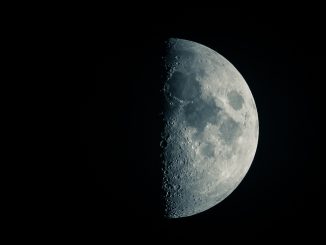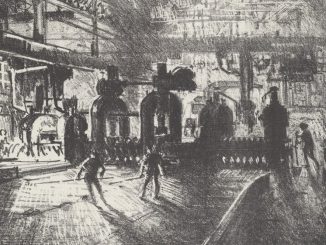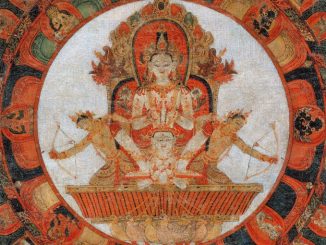
We’re searching for my great-grandmother in the memorial park. My mother remembers her being buried somewhere down the hill, the grave in full sun. Today would be my grandmother’s birthday, and we’ve already visited her crypt. My aunt, who arrived and departed before we even left the house, placed tulips in the holder, waxy orange with red streaks. This family comes and goes in self-imposed divisions, leaving small sprigs of apology for the absences.
I’ve made it halfway down the hill in the quest for Jean Palmer, treading between rows of flat headstones, reading both lines of names simultaneously. Glancing up, I can see my mother moving slowly through the lines I’ve already swept, occasionally disappearing behind the incline as she shifts to a different patch. Our family friend scans another slope; there are too many slopes in full-sun to count, speckled with new mourners like black bouquets.
It would be simple enough to drive to the memorial park entrance for a map that a carefully somber man will jab and say, That’s where you’ll find Jean Palmer. But we’re determined to find her intuitively, or we all three perhaps secretly hope that she’ll lead us to her, she’ll somehow notice how diligently we scrutinize these headstones, she’ll know how hot it is and how we refuse to give up, despite finding Palmers and Jeans, but no Jean Palmer.
By now I’ve wended my way to the hill’s bottom, convinced that she’ll be on the next row—but of course, only if I first scour this row, that Sisyphean paradox of hope that ensures things continue, even if they don’t continue in the direction we wish—until we suddenly glance up and realize how very far we’ve gone. Such as those times at the beach when we tadpole a bit into the surf and glance back to gesture to our friends and find them many more wave crests away than we could ever have expected.
My mother beckons me silently from the sunlit hilltop; she could be calling my name, but sound doesn’t carry here, even though our quietest voices seem so loud. I trudge up the hill alongside the graves—I haven’t stepped on or over one yet—and reach my mother, who explains, She won’t be all the way down there. Such is memory, which allows us to forget where things are, but to remember where they are not.
But as we file through the upper rows of graves again, I’m convinced that my mother’s memory is inverted, as memory also often becomes, and Jean Palmer is buried on the opposite incline. I make my way into this quieter space as my mother finally acquiesces and drives to find a map, and our friend is lost somewhere amongst the lost people.
Now I’m fueled not by hope, but positivity. Not this one, but the next must be my great-grandmother’s burial place. The coordinates are correct: pure sun, mid-slope, close to the cryptorium, amid a cluster of Japanese names. The hills here are such that a person can disappear at just the right angle—those at the bottom cannot see those at the top, the privacy of depth.
How dizzying it is, when I look all around and know I’m able to look all around at this spacious mosaic of the deceased. My mother’s still gone and how long it seems, though she’s just down the hill and around the curve, probably stuck in a line of just-as-disoriented mourners.
I regroup with our friend and he explains that he found Bette Davis’s grave. In the search for Jean Palmer, we’ve finally found Bette Davis, who we’d been looking for since we first arrived, my mother and I trying to recall by what actress our grandmothers rested, even as, I now realized, we walked right past the answer.
We lean upon the sepulcher’s opposing corners, anchors fearing that the well-kempt marble will suddenly vanish before my mother returns. In a landscape of the gone, the landscape itself becomes susceptible to disappearance.
A man washes chrysanthemums at the crypt flower sink and gently shakes excess droplets onto the grass. A couple takes a photograph in front of a meaningless statue. My mother arrives flustered, but bearing two maps, one an overview, and the other a detail, with grave 200 carefully highlighted. Neither’s helpful—I insist the curve of the road is here, my mother insists there. We rotate the paper like a pinwheel until I stalk off to test my theory.
I follow the street’s arc and make my way across the lawn using the memory of the highlighted rectangle as guide. I feel that Jean Palmer isn’t drawing me to her; rather, it’s up to me to find Jean Palmer.
I nearly step on her headstone not twenty feet from where we first parked. A small pot of yellow roses sits at the corner of the plaque, probably placed there by my aunt or by my great-aunt for my aunt to see. I let out something like a yodel, a loud AH! of relief, before remembering that a funeral party stands with heads bowed less than ten feet away. My mother’s nowhere in sight and I cannot call out to her. I wait at Jean Palmer’s grave. She can’t leave, but again, how hard it is to leave something that’s just been found.
Neither my mother nor our friend appear, so I make my way to the place where they were last erroneously searching. They crest the hill, heads lowered, still looking. I flag them down—surely they can see me from this distance, surely they must be wondering where I’ve gone! I found Jean Palmer! I want to call, but they keep walking. The grass is thick under my flip flops; a man exiting the cryptorium crosses paths with my line of sight; pauses at my hailing; continues. Finally, my mother glances up and she knows I have found Jean Palmer.
 HANNAH HUFF is a Southern California-based writer and poet originally from Paso Robles, CA. She holds a BA in English from UC Los Angeles, an MFA in Creative Writing from CSU Long Beach, and now wanders among books as a library assistant at Irvine Valley College. Her writing has appeared on Terrain.org and in RipRap Literary Journal.
HANNAH HUFF is a Southern California-based writer and poet originally from Paso Robles, CA. She holds a BA in English from UC Los Angeles, an MFA in Creative Writing from CSU Long Beach, and now wanders among books as a library assistant at Irvine Valley College. Her writing has appeared on Terrain.org and in RipRap Literary Journal.
Twitter: @poethuff
Featured image: Photograph by Toa Heftiba on Unsplash.


